UXpin's Blog, page 72
October 14, 2021
How to Build and Manage An Effective Product Development Team
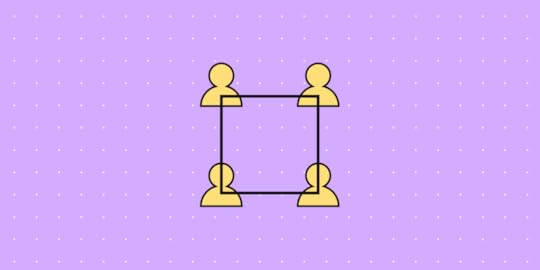
At the heart of every company, there is a critical function called product development that determines their long-term success. Regardless of what industry you operate in, your capacity to develop, validate, and bring new products to market is paramount. Research from the 280 Group showed that an optimized product development function on its own could increase company profits by 34.2%. This often comes down to having the right product development team on board.
In today’s article, we’re going to discuss how you can build and manage a team that will effectively support you in digital product development. Let’s dive right in!
Table of contentsKey Areas to Focus On While Building and Managing a Product Development Team1. HiringHire for both hard and soft skillsCreate a skills inventoryUse the right skills assessment methodsBe proactive when searching for talent2. Leadership3. Internal ProcessesDecide on the right team structureUse Tools That Improve Design-Development Team CollaborationCreate Product BriefsOrganize Regular MeetingsDecide on Appropriate Performance Evaluations4. Career ProgressionSummaryKey Areas to Focus On While Building and Managing a Product Development TeamThere are a few aspects that you need to consider from hiring and leadership all the way to career progression.
1. Hiring

It should go without saying that you want to assemble the best possible people as part of your product development team. Here are some principles to keep in mind that will help you do exactly that:
Hire for both hard and soft skillsIt’s not enough to just hire technical wonderkids. Apart from first-class hard skills, they should also possess the right soft skills including communication, teamwork and problem-solving abilities. Only then they will be able to positively contribute to product and design development.
Create a skills inventoryWork on identifying the skills that you currently have access to and those areas in which you’re lacking. This exercise will help you understand the sorts of skills that you should be looking to go out and hire.
Use the right skills assessment methodsWhen you’re evaluating potential hires, it’s crucial that you use the right type of skills assessment test for the specific use case. This will help you ensure that you aren’t wasting time and resources on irrelevant assessments or candidates that aren’t fit for the role.
Be proactive when searching for talent
It’s important to remember that top performers almost never come through open job applications. They’re in high demand and usually, they can sit back and wait for opportunities to come to them. As such, it’s important that you use platforms like StackOverflow, LinkedIn, and referrals from your network to proactively search for the best talent and bring it into your team.
2. LeadershipThe next important component to ensure smooth product planning and development is creating the right product culture. And that needs to be set from the very top. Ben Horowitz, famed entrepreneur, and businessperson, explains it as follows:
“Culture isn’t a magical set of rules that makes everyone behave the way you’d like. It’s a system of behaviors that you hope most people will follow most of the time.”
The way that you encourage these behaviors is by clearly communicating a vision for where you want the product and the team to go. Everyone is looking to the leaders for this clarity and it helps to ensure that everyone is pulling in the same direction and working towards achieving the same goal. Without this alignment, your culture is left to the whims of the lowest common denominator and that can be very harmful to overall team dynamics.
Another important principle is that you should aim to empower your team rather than micromanage them. The most talented designers and developers don’t want to feel like someone is watching over their shoulder all the time. They want to work independently and feel like they have the trust of their leaders. The role of a good leader is to support his team with whatever resources, direction, and incentives they can, but then step out of the way so that each person can do what they do best.
3. Internal ProcessesThe next step is to make sure that your internal operations are set up in the most efficient and effective way possible to enable smooth product planning and development. Here are some of the things that you should be considering here:
Decide on the right team structureTo maximize the collaboration in your product development team, you need to have a solid structure that creates the space that your people need to do what they do best. This is key – if you get it wrong, you’ll find that your progress is impeded quite significantly, and you might not even realize it. Here are three common structures that could work for your team:
Centralized Team Structure. In this setup, your entire product development team works in one location, all under one key decision-maker. When you do this, your developers work as mini-agencies, essentially being deployed to various projects as and when needed. You benefit from shared knowledge and experiences while also unifying the product development principles throughout the organization. The downside is that your team is somewhat isolated from the rest of the business which can lead to misalignment.Embedded Team Structure. Here individual product developers are integrated into teams across the organization in a cross-functional way. This means that each individual is deeply embedded in specific products which is great for focus, but it does result in some duplicated work because other developers might not know exactly what you’re working on.Flexible Team Structure. This is where you combine the centralized approach with the embedded one. Developers are still integrated into specific teams, but they also report to a head of product development that seeks to align everyone and unify the approach. This flexibility is very valuable but also can result in wires being crossed when team members aren’t sure who to report to and who should be making the final decision.There is no one right option here because everything will depend on your unique company circumstances and the sorts of products you’re working on. It’s worth revisiting this every now and then to find the right option for you, also don’t be shy to experiment. A great example of this comes from Buffer, a social media automation company that has changed their product team setup multiple times until they stumbled across the right results in terms of effectiveness and information flow.
Use Tools That Improve Design-Development Team Collaboration
Great software can be a fantastic asset for improving the collaboration between your design and your development teams so that everything goes as smoothly as possible.
For brainstorming within the product development team you might want to consider tools like Miro that offer powerful visual collaboration spaces for teams of all sizes.For building error-free prototypes fast, UXPin Merge will help you leverage ready UI code components to accelerate the process while also simplifying a few traditional product development processes like handoff.There are a wide variety of other technological tools that could be helpful – so look out for those gaps in your processes, and see if there are solutions to help you tighten them up.
Create Product BriefsProduct development can very quickly expand beyond its original scope if you don’t have the right context and guardrails in place to keep the project on track. One of the best ways to do this is to codify your thinking and plans into comprehensive product briefs. These documents align everyone’s expectations and record the direction that the product is going in.
Nicole Burrow, design director for CX at Spotify articulated this perfectly when she said:
“A key ingredient in team success is ensuring they have all the context they need. I introduced this collaborative brief that designers develop alongside their product counterparts, so they always have the “why” defined before they start ideating. This helps us align on what problem we’re trying to solve and why this is important to the business at the outset of the hypothesis development stage.”
Organize Regular MeetingsAlong the way, you should be looking to organize regular meetings for your product development team to come together and make sure that everyone is up to date with what’s going on. These could include the following:
Daily standup meetings to build accountability and ensure that the whole product development team knows what everyone else is working on.One-on-one meetings with the team leader to clarify direction and look for opportunities to improve.Team meetups to go through sprint planning exercises and retro meetings to assess progress.These meetings are crucial to managing the project and should act as a valuable check and balance to keep everything in line.
Decide on Appropriate Performance EvaluationsIt’s important that you select the right evaluation techniques to monitor and measure performance. This needs to be done not just on an individual level, but also at a team level. The most common framework implemented by great companies is the Objectives & Key Results framework (OKRs). One example is Sears who saw an 8.5% increase in hourly sales within 18 months of introducing the system. And those results have been repeated by numerous other companies who have done the same thing.
OKRs are a robust method for setting and tracking goals. The objective states what is to be achieved, and the key results explain what it’s going to take to achieve that objective. This allows you to create cascading goals that are systematically linked – pushing you towards the north star mission while managing all the smaller steps along the way.
4. Career ProgressionLastly, if we zoom out from one specific project and think about your product development life cycle as a whole, it’s crucial that you give your top performers a clear path in terms of career progression. You want to design career paths that align with the goals of your team members so that they feel valued and purposeful. Spotify does this with their Y shape progression which gives designers the decision between moving into management or continuing to refine their design skills to become an expert.

Having a clear progression makes for a much more stable working environment where employees know where they stand. This is critical for retention and for maintaining morale throughout each product development cycle.
SummaryAnd there you have it. Those are some of the core principles that can help you build and manage an effective product development team. When you implement these and focus on the key action steps – you’ll find that your digital product development moves to an entirely different level.
Operationally, there are few things that will deliver a better ROI on your time and investment than getting your product development team in sync. Now is the time to rethink your processes and get these best practices into your organization as soon as you can. And if you’re looking for a tool that will help you further optimize your product and design development, then check out UXPin Merge!
Discover MergeThe post How to Build and Manage An Effective Product Development Team appeared first on Studio by UXPin.
October 13, 2021
What is UX Writing and Why You Need a UX Writer
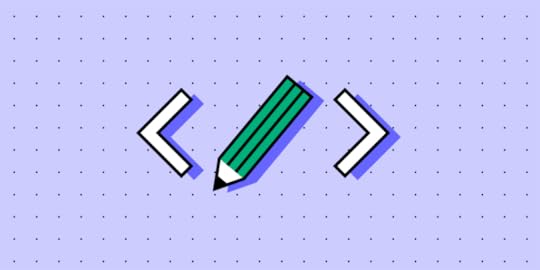
Nowadays, pretty much everyone knows what content writing is. But the same can’t be said about UX writing. And yet this new role within the product design team has become ever so important. So, what is UX writing, how does it fit into the design and product teams and what are the key principles of good UX writing? Read on to find out.
What is UX writingUX writing – or user experience writing – is the process of creating user-friendly copy for all user-facing touchpoints, including user interface. And this is not just a decorative text. UX copy informs, guides, urges and helps users take action – and this only works effectively when it is created as a part of a formal product design process. As great copy within an interactive UX design helps to create a great user experience – one of the keys for a successful product – no wonder it has become an important role on its own.
What does a UX writer doUX writers write microcopy used throughout digital products – whether it is a piece of software, a web application, or a mobile app. These pieces of copy are menu labels, buttons, calls-to-action, confirmation and error messages, security notes, etc. UX writers create a copy in such a way that users understand what and why they should do in order to achieve a certain result. To create a great UX copy, UX writers not only need to create consistent, error- and typos-free copy but also have a thorough understanding of the end-user experience of the product they’re writing for. They need to make it easy for users to take the path that leads towards a particular outcome in a logical, intuitive manner.

For a very long time, it was software developers and graphic designers who would write the microcopy for digital products. Back then UX writing was underestimated and considered a luxury. As a result, the microcopy within the product was often inconsistent and confusing for the user, not to mention that it was sometimes filled with grammar errors and spelling mistakes. And that’s understandable – nobody can excel at everything, and software developers or designers aren’t an exception to this rule. Especially that they know the product inside out and it’s hard for them to empathize with users.
…and what does UX writer not do
The role of UX writer should not be confused with that of a technical writer (who does the technical writing and focuses on clarity and accuracy, not on user experience), content strategist (who plans content strategy, i.e. content on a bigger scale, and doesn’t necessarily write copy), information architect (who works on, well, information architecture, meaning that (s)he builds sustainable information structures and taxonomies) or content marketing copywriter (who writes marketing copy that attracts leads, converts them into customers and helps to retain them).
UX writing in a design and product teamUX writers are members of UX teams, and as such they’re expected to conduct or collaborate on conducting the UX research. UX copy and UX design teams work together to discover options that improve the functionality, usability, and accessibility of the final product. As a result, they’re able to both streamline the design process and develop better digital experiences that attract more users.
UX writers also work closely with product developers, focusing on missing logic or a confusing interface, thus influencing the final product that is being developed. UX writers also collaborate with other teams within the organization, such as marketing, legal, and business development, in order to ensure that copy is aligned to brand voice, strengthens product’s UVP, and doesn’t get the company in trouble.
Types of UX contentThe specific types of UX content vary depending on the digital product, but generally speaking the most common types of UX content include:
First-time users onboardingMenu labels, form field labels and listsButtons and call-to-actions (CTAs)Settings labelsContextual help and tooltipsConfirmation messagesError messagesSecurity notesIn-product marketing (e.g. pop-up ads)Chatbot conversation scenariosLegal notices and disclaimersUX copywriting principlesGreat UX writing is all about clean, purposeful lines, making each word count. Superfluity and redundancy are its enemies. That’s why some people compare UX writing to… writing poetry! But great UX writers must also:
Know not only what the product does but also how it improves the end user’s life and makes it easier. Having empathy for the end user and his or her needs and wants is the key to successful UX writing. Inform about what the product is capable of doing and guide users on how to do it in a logical, easy-to-follow manner.Look critically at the product flows, anticipate user questions, preempt their frustrations with proactive help and guide them through tasks.Be clear, concise, unambiguous, and – whenever necessary – break down complicated processes into easy to do steps. UX copy should only give the necessary or requested information at any given time.Use brand voice and, whenever possible, reinforce the product’s Unique Value Proposition (UVP) to help it stand out from the competition.Incorporate best content design principles based on research and always create copy in context, directly in a wireframing tool, that shows it with all the fonts, images, buttons etc. UX writers shouldn’t use Word documents or Excel sheets for their copywriting.Summary
Inform about what the product is capable of doing and guide users on how to do it in a logical, easy-to-follow manner.Look critically at the product flows, anticipate user questions, preempt their frustrations with proactive help and guide them through tasks.Be clear, concise, unambiguous, and – whenever necessary – break down complicated processes into easy to do steps. UX copy should only give the necessary or requested information at any given time.Use brand voice and, whenever possible, reinforce the product’s Unique Value Proposition (UVP) to help it stand out from the competition.Incorporate best content design principles based on research and always create copy in context, directly in a wireframing tool, that shows it with all the fonts, images, buttons etc. UX writers shouldn’t use Word documents or Excel sheets for their copywriting.SummaryAs you can see, having an experienced UX writer on board is the key to improve the overall quality of your product design. Remember that your user interface microcopy is there to help users accomplish their goals. And this is what ultimately will bring more customers to your digital product.

If you’re looking for ways to improve work within your UX team, consider giving UXPin a try. It’s a cloud-based design tool that makes it easy for UX writers and UX designers to collaborate in real-time. It even allows you to import real data into your designs! See how it works with a free 14-day trial – with no commitment to buy!
The post What is UX Writing and Why You Need a UX Writer appeared first on Studio by UXPin.
October 11, 2021
What Is a Prototype: A Guide to Functional UX

Prototyping is one of the most critical steps in the design process, yet prototypes still confuse some designers and project teams.
A common misconception is that some designers refer to mockups as prototypes—which can confuse those who know otherwise! Prototypes are also not a series of sketches or a pixel-perfect prelaunch interface.
In this post, we’re going to define what prototyping is and explain the different variations. We’ll also show you how to make clickable user interfaces, and most importantly, how prototypes can optimize the user experience.
What Is a Prototype?A prototype is “A simulation or sample version of a final product, which UX teams use for testing before launch.”
The goal of a prototype is to test and validate ideas before sharing them with stakeholders and eventually passing the final designs to engineering teams for development.
Prototypes are essential for identifying and solving user pain points with participants during usability testing. Testing prototypes with end-users enables UX teams to visualize and optimize the user experience during the design process.
Engineering is expensive, and making changes to a final product is often not as straightforward as teams anticipate. So, finding and fixing errors during the design process is critical!
Prototypes have four main qualities:
Representation — The prototype itself, i.e., paper and mobile, or HTML and desktop.Precision — The fidelity of the prototype, meaning its level of detail—low-fidelity or high-fidelity.Interactivity — The functionality open to the user, e.g., fully functional, partially functional, or view-only.Evolution — The lifecycle of the prototype. Some are built quickly, tested, thrown away, and then replaced with an improved version (known as “rapid prototyping”). Others may be created and improved upon, ultimately evolving into the final product.Another common misconception about prototyping is that it only needs to be done once or twice at the end of the design process—not true.
One of our mottos at UXPin is “test early and test often.”
You should prototype every possible iteration of your design—even your early basic ideas. Prototyping shouldn’t be reserved only for beta tests of the final version; you should test any and every version of your product!

If testing a prototype produces new insights about how end users will interact with your product, then it’s worth taking the time to gather feedback and iterate—whether that’s paper, low-fidelity, high-fidelity, or HTML.
Get the design tool that lets you create advanced prototypes that look and function like your final product! Sign up for a 14-day free trial to explore UXPin’s powerful design and prototyping features.
The Most Useful Prototyping MethodologyWe’re going to explore prototypes in three categories: paper, digital, and HTML.
Paper PrototypingPaper prototyping works best during early design stages where UX teams collaborate to explore many concepts fast. Team members sketch ideas by hand using simple lines, shapes, and text. The emphasis is on lots of ideas and speed, not aesthetics.

UX Teams lay paper screens on the floor, table, or pinned to a board to simulate user flows. A common practice for testing these prototypes is to have one person play “the product,” switching the sketches according to how the user behaves.

A low visual/low functional paper prototype.
Advantages of Paper Prototypes
Fast — You can sketch a prototype in minutes, which is why paper works so well for testing lots of ideas. You can draw a prototype quickly (even during a brainstorming meeting), so you haven’t wasted more than a few minutes if an idea falls flat. Inexpensive — You only need a maker pen and paper to create prototypes, making the process cheap and accessible.Team-building — Paper prototyping is a collaborative effort, and often teams have fun coming up with fresh ideas. It’s a fantastic team-building exercise, and these free-thinking sessions often inspire creativity.Documentation — Team members can keep physical copies of paper prototypes, notes, and todos for quick reference during future iterations.Disadvantages
Unrealistic — No matter how skilled the art or craftsmanship, paper prototypes will never be more than hand-drawn representations of a digital product. So, while they’re quick to draw, paper prototypes produce little or no results when testing with end-users.False positives — Sometimes, paper prototypes don’t validate ideas properly. What seems like a good idea on paper might not work effectively in a digital wireframe.No gut reactions — Paper prototypes rely on the user’s imagination, adding a break between seeing the stimulus and responding to it. That “gut” reaction is crucial for a successful UX.Considering these advantages and disadvantages, we recommend paper prototyping only during early-stage design. Once you move from paper to digital, there shouldn’t be any reason to revisit hand-sketched prototypes for the same designs or user flows.
For more information on paper prototyping, check out these helpful resources:
Paper Prototyping as a Usability Testing Technique by Justin Mifsud Better Use of Paper in UX Design by Marcin Treder iPhone User Interface Design, Paper Prototype Design (video) Printable Paper Prototyping Templates courtesy of Tripwire MagazineDigital PrototypingDigital prototyping is an exciting part of the design process. Prototypes start to resemble the final product allowing teams to test and validate ideas.

There are two types of digital prototypes:
Low-fidelity prototypes: a user flow using wireframesHigh-fidelity prototypes: a user flow using mockupsLow-fidelity prototypes allow research teams to outline basic user flows and information architecture. High-fidelity prototypes go into more detail, testing user interfaces, interactions, and how usability participants interact with a product.
Designers build prototypes using design tools like Figma, Adobe XD, and others. Sometimes non-designers, from product teams use Powerpoint or Google Slides to simulate user flows.
UXPin is unique because it allows designers to create prototypes that look and function exactly like the final product—something you cannot achieve with other popular design tools!
Low fidelity UXPin prototype created during a Yelp redesign exercise.
Advantages
Realistic interactions — Testing with high-fidelity digital prototypes lets UX teams see how users interact with the final product, thus effectively iron out any usability issues.Flexibility — Test early and test often! You can start with lo-fi prototypes that become progressively more advanced as the design process moves forward.Speed — While paper prototypes might be the fastest way to test ideas, digital prototypes are the quickest way to test usability issues. Once a product gets to the engineering stage, changes cost significantly more time and money.Disadvantages
Learning curve — Before you can build a prototype, you’ll need to learn and understand the software—which is why product teams often use Powerpoint instead of a specialized design tool. The good news is that most design software incorporates the same tools, so it’s relatively easy to switch between them.Cost — As you move from low-fidelity to high-fidelity prototyping, time and labor costs increase.A prototype’s success depends on teams outlining clear objectives and KPIs for each usability study. Without a proper plan, designers can get side-tracked, adding unnecessary features and interactions!
Here are some helpful resources for creating digital prototypes:
A 10-Minute Rapid Prototyping Lesson by Marek Bowers Creating Interactive Prototypes with PowerPoint by Amir Khella Creating Interactive Prototypes with Keynote by Amir KhellaHTML & JavaScript PrototypingOn rare occasions, teams might build HTML & JavaScript prototypes to get more accurate results. The downside to this approach is that coding comes with considerable time and technical costs.
But with UXPin Merge, that isn’t the case!
Designers (and non-designers) can create code-based high-fidelity prototypes that look and function like the final product.
For example, with UXPin Merge, teams can use React components pulled from a Git repository or Storybook components to create fully functional high-fidelity prototypes. With UXPin Merge, participants never have to “imagine” what a button or dropdown will do because the prototype functions like the final product!

Low Visual/High Functional Prototype built-in HTML. (Image credit: Mike Hill)
Advantages
Final product functionality — HTML prototypes provide participants with an accurate model of the final product.The technical foundation for the final product — Building an HTML prototype provides researchers with a valuable research tool and provides developers with the foundations for building the final product.Platform agnostic — You can test your prototype on virtually any operating system or device, and the user won’t need to run outside software.Disadvantages
Dependent on designer skill level — Your HTML prototype is only as good as your ability to code. Poorly coded prototypes could introduce usability issues that don’t have anything to do with UX design!Inhibits creativity — Coding takes time and focus to build a usable prototype. Designers might not achieve the same level of innovation or creativity as using a familiar design tool.Here are some helpful resources on HTML prototyping:
Designing with Code by Andy Fitzgerald The Advantage of Rapid Prototyping by ZURBThe Prototyping ProcessThere’s no single best process for prototyping; it all depends on the product and application. Below are the three most effective prototyping processes, each intended for different scenarios.
(Note: We advise that you ALWAYS test the prototype when going from lo-fi to hi-fi.)
Paper => Lo-fi Digital => Hi-fi Digital => CodeMost designers follow the paper => lo-fi digital => hi-fi digital => code process for prototyping—it’s how we designed UXPin :).
Teams collaborate to develop lots of ideas, sketching wireframes on paper and creating user flows before committing to digital. Here, UX teams will use common brainstorming methods like crazy eights or asking “how might we” questions to get into an end-user mindset.
A lo-fi digital prototype (wireframe) tests crucial elements like navigation and information architecture early in the design process. Teams can use feedback to make quick adjustments to wireframes before committing to mockups.
Once teams complete navigation and information architecture, designers build mockups resembling the final product—adding color, content, interactions, and animations.
When researchers have exhausted testing, UX teams hand over designs to engineers to develop the final product.
High-fidelity prototype created during a Yelp redesign exercise. (View large version)
Paper => Lo-fi Digital => CodeGoing from Lo-fi prototyping to code is an old approach that few teams ever use these days. While lo-fi prototyping is cheap, it doesn’t catch many of the usability issues high-fidelity prototypes expose.
Developers without design skills might use the paper => lo-fi digital => code method because it’s quicker for them to code than learn how to use a design tool.
The process is exactly like the example above, except that teams will skip the hi-fi digital step.

Low fidelity prototype created during a Yelp redesign exercise.

High fidelity prototype created during a Yelp redesign exercise.
HTML Prototyping => CodeSolo developers might skip any early prototyping methods and go straight to code. With no one to bounce ideas with, it can make sense for a developer to jump straight in.
Essentially, the prototype creates a foundation and evolves into the final product. This prototyping method is only effective for skilled developers with efficient workflows.
Even designers with excellent design skills might want to avoid this method of prototyping. Low-fidelity and high-fidelity prototyping are significantly faster than building and editing code.
Paper =>UXPin Merge – Hi-fi Prototyping => CodeWith UXPin Merge, you can accelerate the UX process through rapid prototyping. Create fully-functioning high-fidelity prototypes using UI code components to provide participants with a life-like model of the final product.
UX teams follow the standard paper prototyping processes as outlined above. Next, designers build high-fidelity prototypes using UXPin Merge just by dragging and dropping ready interactive UI blocks on the canvas. The outcome: no more “imagining!” Your prototype will work just as the final product. Prototyping in a code-based design tool like UXPin Merge means engineers can build the final product significantly quicker than working with vector-based designs.
Further ReadingWe compiled this article from our free ebook: The Ultimate Guide to Prototyping. If you found this introduction to prototyping helpful, we highly recommend downloading the complete ebook on prototypes!
The Ultimate Guide to Prototyping includes:
How prototyping fits into the overall design processAdditional descriptions of individual prototypes10 prototyping best practicesAdvice on usability testingTons of tools and resourcesDownload your free copy of The Ultimate Guide to Prototyping to level up your prototyping skills!
Want to get to know more about prototyping tools? See our comparisons:
UXPin vs Figma UXPin vs InvisionUXPin vs Adobe XDUXPin vs FramerThe post What Is a Prototype: A Guide to Functional UX appeared first on Studio by UXPin.
October 7, 2021
Design Handoff – Creating a Better Experience for Designers and Developers

The design handoff is a critical part of any project. For many designers and engineers, the design handoff is a stressful experience. If either team misses something, it could result in product defects and delays.
While it’s primarily the responsibility of the UX team to produce prototypes, assets, and documentation, the design handoff process is a collaborative effort—starting in the early design stages.
There are three stages to a successful design handoff:
During Design (before the handoff)During HandoffAfter HandoffUXPin is a collaborative design tool bridging the gap between design and development. Design teams can save time producing documentation with UXPin’s automated design specs, CSS, and style guides. Try Spec Mode feature to streamline handoff or use the power of code components in design with Merge technology.
During Design (before the handoff)A design handoff is not a single event in the design and development of a digital product. Instead, it’s a process that starts during the early design stages and ends after designers have completed the final product.
Designers and engineers must communicate and collaborate to streamline the design handoff process, mitigating costly errors.
Discovery
During the early stages, designers and engineers should meet to discuss technical constraints concerning design ideas. While innovation is essential to build a competitive advantage, designers must work within the company’s resources and technical constraints.
A development team representative should attend user research to learn the “WHY” behind design decisions. By doing so, developers will better understand the user’s needs and the problems UX designers are trying to solve.
PlanningIncluding developers in design sprints is another way to align technology and design. Developers can work with designers during sprints to find solutions to user problems that align with technical constraints.
At the same time, developers can begin taking notes to research tools or packages they might need to build new features.
PrototypingDevelopers can provide valuable feedback and insights during the prototyping phase—like how designs might look and function across different browsers, devices, and viewports.
Getting developers to sign off on designs and features during the prototyping phase can save a lot of time and heartache for the final design handoff. There’s nothing worse than going “back to the drawing board” because UX teams’ vision doesn’t align with the technical reality!
It’s also helpful for a development team representative to attend late-stage usability testing to visualize how users interact with the final product.
User Interface DesignA well-documented design system is a crucial part of any digital product. Creating a component-based design system allows engineers to code reusable “widgets” to develop the final product efficiently.

Designers and developers can work together to ensure that the design system is consistent and that sizing conventions will translate to code effectively.
Developers can also provide technical specs for asset formats and sizes, so UX teams optimize content for product and web constraints.
During HandoffIf design and development teams communicate and collaborate effectively during the design process, the handoff should be a smooth process of double-checking and organizing.
How designers present a design handoff is as important as the documentation, files, and assets themselves.
Firstly, UX teams should delete unused layers and guides to avoid confusion. Designers must also double-check they have grouped and labeled components correctly.
Using a consistent naming convention (like the BEM notation) will help developers quickly locate files, assets, components, and elements. Engineers might advise on a preferred file structure that aligns with an efficient development workflow.

Explicit annotations are essential for developers to understand mockups and interactive prototypes. These annotations provide context or describe functionality that might be beyond the design tool’s capabilities.
Lastly, designers must walk through the product with the documentation to ensure developers receive a comprehensive design handoff.
After HandoffUX teams play a vital role in the implementation’s quality assurance (QA)—testing the final product against interactive prototypes and mockups.
Once the final product is complete, designers and engineers should meet to discuss improving the design handoff process for future products and features.
47-Point Design Handoff ChecklistWe’ve created this simple 47-point checklist as a guide for your next design handoff.
 During Design
During DesignDiscovery:
Invite developers to attend user interviews when possible. Circulate bulleted summary of user interview insights with developers. Conduct a 30-minute to 1-hour stakeholder interview with at least one developer. Use Kim Goodwin’s excellent questions. Create and quickly review lean personas with developers. Get developer input and alignment on technical restraints for the design brief.Planning:
Ensure developers (or at least the development lead) attends the kickoff.Conduct user story mapping with developers to plan epics and sprints. Estimate build time for user stories with developers using tactics like planning poker. Plan 1-2 design sprints ahead of the development process. Check which framework the designs must use (Bootstrap, Foundation, custom, etc.). Adapt grids and elements accordingly. Verify browser support with developers. After each standup meeting, quickly review the backlog with developers.Prototyping:
Walkthrough user flows and lo-fi prototypes for developer feedback on feasibility. Start designing extreme viewports (smallest and largest) to accurately “bracket” your content. Consider how your design will respond to screen sizes slightly smaller or larger than your assumptions. Incorporate rough content (not Lorem Ipsum) into the prototype within the first two iterations. Invite developers to attend at least one user testing session. Prototypes account for all interaction states, error states, and transitions between states. Prototypes account for data extremes (e.g., short and long last names, phone number formats, non-US postcodes). Circulate all user test recordings with a bulleted summary of insights to developers. Collect feedback and approval from developers at each iteration of the prototype.UI Design:
With each iteration, rename your design file (v.1, v.2, etc.). Do not rename “Latest” or “Newest.” Upload every new version into a shared repository. Create as many reusable patterns as possible (menus, links, buttons, panels, etc.) so developers have a component-based system. Make UI decisions that create consistency for the user experience and codebase. Get developer buy-in on image formats and sizes. Create designs in all significant breakpoints on a grid system with guides/overlays. To preserve typographic integrity, use whole font values and leading values (e.g., 15 instead of 15.75).Use web-safe fonts when possible. Don’t use more than one custom font. Check that you own the rights for all photography and typography. Hold a 30-minute to an hour review of final approved mockups alongside the prototype: walkthrough project goals, user stories, interactions, states, and failure states.During HandoffVisual Hygiene:
Delete all unused layers. Don’t just hide them since that may confuse developers. Delete all unused guides. Group and name layers appropriately based on UI modules (navigation, footer, etc.) Follow a common naming convention with developers (e.g., a “widget” is not the same as a “module”). Consider using BEM notation. Instead of naming artboards with “FINAL” or “LATEST,” follow a standard versioning protocol (v.1, v.2, etc.). For easier navigation, collapse all layers before sending off designs.Assets:
Create subfolders within your main project containing all relevant icons, fonts, images. Include SVGs wherever possible. For raster files, include versions at 2x.Documentation:
Annotate prototypes with use cases, failure states, and interaction nuances. Annotate the full code snippet (or classes in frameworks) next to every element. Use an inspection tool to auto-generate visual specs (color codes, dimensions, font sizes, margins, padding, etc.). Avoid redlining as much as possible. Ensure all documentation stays updated to reflect the final system as it evolves. Developers will refer to the documentation to understand the depth and breadth of the system, using the final prototype as a reference for acceptable behaviors.After HandoffAccuracy of Build:
Designers perform an “implementation audit” of each build during the QA process against the final prototype. Designers attend sprint demos along with PMs. Acceptance testing includes UX criteria based on the final prototype.Design System:
Describe accessibility requirements and any implications on the development process. For example, Salesforce Lightning: “Our forms offer proper use of and tags as well as appropriate labeling for input controls.” Include code snippets for all UI components (menus, buttons, etc.) along with specific descriptions of use cases. Include links to downloadable UI kits, color swatches, and code repositories (e.g., Github).Design Handoff With UXPinUXPin automates many mundane tasks to save UX teams valuable time during a design handoff. Unlike other design tools, UXPin requires no plugins or third-party apps to produce handoff documentation and annotations.
UXPin generates design specifications inside the tool, eliminating the need for external documentation while avoiding misunderstandings. Developers can download assets directly from UXPin’s Style Guide—no need to share via cloud storage like Dropbox or Google Drive.
Design, development, and product teams can collaborate throughout the design handoff process with UXPin’s comments. Team members can tag one another, assign tasks, and choose whether comments are visible to the Team or the Public.

If you want to take design handoff to the next level and get rid of any product drifts – our Merge technology will be just the right fit. Designers can prototype with fully interactive components that developers build final products with. Thanks to designers and developers using the same components from the same coded design system that’s stored in a repository or Storybook, they can be on the same page and avoid all the errors that come out in a design handoff process.
See how UXPin Merge works – get rid of product drift and maximize your design systems.
Discover MergeThe post Design Handoff – Creating a Better Experience for Designers and Developers appeared first on Studio by UXPin.
UX Portfolio – All You Need to Know (with 10 Examples)

In a competitive user experience design landscape, designers must ensure their UX portfolio stands out from the crowd. For some company’s a UX design portfolio is more important than where you went to school or what degree you hold.
User experience is about solving human problems, which employers want to see in a UX portfolio—along with teamwork, UX design processes, and what you’ve learned from successes and failures.
UXPin is a design tool that enables UX/UI designers to exercise creativity and build layouts fast. Design or update your UX portfolio using UXPin’s 14-day free trial.
What is a UX Design Portfolio…and do You Need One?A UX portfolio showcases your work experience, design skillset, project highlights, understanding of the UX design thinking process, and how you apply it.
A CV is usually one or two pages, which isn’t enough space to showcase all of the above. So, a UX portfolio complements your CV, allowing potential clients and employers to explore your work and knowledge.
Designers usually create UX portfolios in a website format as it’s quick and easy to share. A website is also likely to appear in search results, increasing the likelihood that potential clients will find and hire you.

The website itself also showcases your web design skillset and knowledge of responsive web design—so make sure you apply the same rules to your portfolio!
Do You Need a UX Portfolio?All UX professionals (including UX specialists) must have a portfolio website—both freelancers and permanent job seekers. Most UX job applications request a link to your UX portfolio, and potential clients want to see your design skills before hiring you for a gig.
What you Should (and Shouldn’t) Include in a UX PortfolioA UX portfolio should include the following:
Intro/homepage introducing yourselfSimple navigationHigh-quality case studies—from initial concept to final resultsAbout me pageContact pageLink to download your resume in PDF formatLinks to design-relevant social media—LinkedIn, Behance, DribbbleUX Portfolio HomepageUse your portfolio’s homepage to briefly introduce yourself, mention some career highlights, links to case studies, and any major companies or projects.
You can also list your skills, tools you’re familiar with, and any areas where you specialize. Keep all of this information concise, bullet points where possible.
Some designers include testimonials from previous clients to break the page up and provide social validation.
Marcos Rezende’s website is a perfect example of content to feature on a UX portfolio homepage.
Simple NavigationA UX portfolio website should have simple navigation so potential clients and employers can quickly find what they need.
Your header navigation should include:
Work/portfolioAboutContactResume/CVYou can put any other links (including blog social media) in the footer. Remember, your UX portfolio is for busy clients and hiring managers (the users). Prioritize navigation to meet their needs. These primary users are not interested in your blog or social media. And if they are, they can find them in the footer navigation.
High-Quality Case StudiesCase studies are an essential part of a UX portfolio. It’s an opportunity to show off your skills at every stage of the design thinking process.

Your case studies should be comprehensive but concise. Here’s what to include in a UX portfolio case study:
Project overview (problem/goal/purpose/deliverables)Your role & responsibilities (UX designer, researcher, project manager, solo project)Initial user research summaryUser personas & user journey mapInitial concepts and ideas – paper wireframes, digital wireframes, low-fidelity prototypes (consider redrawing your paper wireframes, so they’re neat and legible)High-fidelity mockups & prototypesUsability testingFinal designs after usability testingLink to the final product or mockup (if available)Product successes (did your design increase signups, revenue, etc.)If you’re new to UX design, include detailed case studies from your UX course or complete two or three UX design challenges to show that you’re familiar with UX principles and user-centered design.
Marcos Rezende’s COVID-19 dashboard for Ontario, Canada, is a fantastic example of a UX case study to include in your portfolio.
Ready to design a UX portfolio like Marcos Rezende’s website? Set yourself a portfolio design challenge with a 14-day UXPin trial!
About Page
Your about page should include one or two pictures of yourself and three paragraphs max. The essential parts for a UX portfolio about page:
A brief intro about who you are, where you’re from, and where you studied—mention hobbies but don’t go into too much detailWhy you chose UX design as a career pathYour work ethicYour career goals and aspirationsYou can also include a brief section with career highlights, significant projects or companies, and any awards or accolades. Keep these as bullet points so people can scan and pick out important pieces.
Contact PageYour contact page should be as minimal as possible—only a contact form (full name, email, message), preferably. You can include your email and contact number but be warned that you WILL get lots of spam. Rather keep these direct contact details in your PDF resume.
Link to Download Your Resume in PDF FormatMost content management systems (CMS) allow you to upload PDFs for website visitors to download. Use this to upload your resume in PDF. Put a link to your resume in the main navigation, on the about page, and footer. That way, it’s easy for potential employers to find.
If you’re a freelancer, then including a resume is optional.
Links to Design-Relevant Social MediaSome clients or employers might want to see more of your work or explore your professional experience. Design-related social media links might include:
DribbbleLinkedInBehanceMedium (if you write about UX topics)What You Shouldn’t Include in a UX PortfolioThe point of a UX portfolio is to showcase your work. As a UX designer, be mindful of your users (recruiters & clients) and respect their time. Make everything easy to find, avoid adding irrelevant content, and use animations that enhance rather than impede the user experience!
Here is what you shouldn’t include in your UX portfolio:
Non-UX related work history (mention any career highlights or awards but avoid going into great detail)Details about your pets and familyPolitical or social opinionsThings you don’t like or annoy you (might appear hostile)The Do’s and Don’ts of a UX PortfolioDoDemonstrate your problem-solving abilities — Ultimately, UX design is about problem-solving. Anyone hiring a UX designer is hiring someone for their ability to solve their users’ problems. As you describe case studies, make sure you tell a clear story about the problem and how you went about solving it.Display your process and train of thought — Employers want to see your thought process and how you apply design principles. Showcase your process from initial user research to the final product.Demonstrate your visual design capability — You must showcase your illustration and design skills in addition to the design thinking process—especially if you’re looking for a UI/UX role.Show the results of your work (if available) — Describe how your designs led to successes, key takeaways, and the challenges you experienced to get there. Employers love to hear that you overcame challenges or worked within budget/technical constraints to reach your goal.Don’tFocus only on the visuals — A common criticism nowadays is the “Dribbbleisation of Design” — many product designers seem to focus more on pretty work without any thought given to functionality or actual usability. Make sure you demonstrate your usability understanding and consideration. Conversely, don’t forget to include plenty of examples of your visual work!Get bogged down on details — Employers don’t want a wall of text explaining every aspect of your project. For example, if you’re describing the initial UX research, do it in two to three sentences.Emphasize quantity over quality — Choose two or three detailed case studies where you can showcase the complete design process rather than every project you’ve ever worked on. Show your best work, not all your work!10 Great UX Portfolio ExamplesHere are ten excellent UX design portfolio examples to inspire you. Notice how all of these UX portfolios maintain brand consistency, minimal layouts, and easy navigation.

1 Marcos Rezende – UX Designer from Ottawa, Canada. Nominated for a 2021 awwward.
2 Koenvo – Freelance UI/UX Designer from Holland. Nominated for a 2021 awwward.
3 Jing Qiao – UX Designer from the United States. Nominated for a 2021 awwward.
4 Teslim Alabi – UX Designer from the United States. Nominated for a 2021 awwward.
5 Irshad Ahamed – UX Designer from India. Nominated for a 2021 awwward.
6 Vandana Pai – UX Designer from the United States.
7 Pratibha Joshi – Product Designer at Google (United States).
8 Pascal Strasche – Freelance UI/UX Designer from Germany.
9 Ryan Robinson – Interaction Designer at Google (United States).
10 Daniel Autry – Senior Product Designer at The Washington Post (United States)
Design Your UX Portfolio With UXPinIf you’ve never worked with UXPin, then why not design your UX portfolio using the world’s most advanced design tool! By the end, you’ll have another design tool to add to your portfolio!

Sign up for a 14-day free trial to experience the speed and efficiency of designing with UXPin.
The post UX Portfolio – All You Need to Know (with 10 Examples) appeared first on Studio by UXPin.
October 6, 2021
What is Usability Testing and How to Run It

Usability testing is a crucial part of the design thinking process. It’s an opportunity for UX teams to present their solutions to those whose problems they’re trying to solve—a nerve-racking and exciting experience!
UXPin is the world’s most sophisticated prototyping and usability testing design tool. Using UXPin with Merge technology, designers can create high-fidelity prototypes with final product functionality using fully interactive and ready code components. With UXPin, you get accurate testing and meaningful participant feedback. Sign up for a 14-day free trial to experience advanced prototyping and testing with UXPin!
What is Usability Testing?Usability testing (also called usability studies) tests user interfaces and flows with real users. A UX researcher (moderator or facilitator) will ask a participant to complete a series of tasks (usually on a digital product prototype) while observing their behavior and actions.
The moderator might ask the participant to verbalize their thoughts and actions so UX researchers can understand how the person thinks and feels as they use the prototype.
Why do UX Teams Conduct Usability Tests?Usability testing provides UX teams with valuable feedback and user insights, including:
Validating design concepts to solve users’ problemsExposing usability problems to fixDiscovering opportunities for improvementLearn more about the usersUsability testing is an iterative process of testing, exposing issues/learning about the user, making adjustments, and retesting.
The ultimate goal of the usability testing process is to fix and improve prototypes as much as possible before the design handoff, where engineers start the development process.
Usability vs User Experience TestingThere is often confusion and debate over the difference between usability testing vs. user experience testing. It’s incorrect to use these terms interchangeably because they refer to different areas of testing.
Usability testing – tests the product’s usability and performance—user interfaces, navigation, microinteractions, etc.User experience testing – tests the user’s enjoyment and satisfaction while using a digital product.While we define these terms differently, UX researchers test usability and user experience at the same time.
For example, one UX researcher might observe how the participant completes a task during a usability study (usability testing), while another researcher studies the user’s actions and behavior (user experience testing).
These are two important metrics to consider during product testing. If a user can complete a task, UX designers might see this as a job well done. But what if the user was frustrated during the process? They’ll likely switch to a competing product with a better user experience.
Types of Usability TestingThere are two primary usability testing methods:
Moderated testsUnmoderated testsUX teams can apply both of these methods to remote and usability lab (face-to-face) testing.
ModeratedDuring a moderated usability study, the facilitator interacts with the participant, asking them to complete tasks while observing and asking questions.
UX teams can conduct usability studies in a lab or remotely using Zoom, Skype, or purpose-built testing tools.
Advantages of moderated usability testing:
Moderator ensures the participant understands and completes the tasks correctlyModerator can engage with the participant, asking questions about their actions, responses, and behaviorThe above points provide UX teams with accurate, meaningful feedbackDisadvantages of moderated usability testing:
Requires lots of planning to find a venue, participants, align with team schedules, organize equipment, etc.Requires more resources, increasing testing costsLimited participants due to cost and time constraintsUnmoderatedDuring an unmoderated usability study, the facilitator is absent but provides the participant with instructions to complete a series of tasks.
The participant might complete these tasks in a lab environment, the field (where the users will typically use the product), or remotely.
Advantages of unmoderated usability testing:
Researchers can test multiple participants at the same timeFewer resources make unmoderated testing significantly cheaperDisadvantages of unmoderated usability testing:
Relies on participants understanding tasks and instructions without guidance—might lead to uncompleted tasks or inconsistent test resultsUsability Testing MethodsCard SortingCard sorting is an early-stage usability method for testing element hierarchy and establishing information architecture.
The moderator presents a group of topics or categories for the participant to sort—usually by importance or group by relevance.
Paper PrototypingPaper prototyping is another early-stage usability method where UX teams test user flows and information architecture.
UX teams rarely test paper prototypes with participants because usability tests are expensive, and paper prototyping doesn’t provide meaningful user feedback.
Still, paper prototypes can provide some insights into the user’s navigational expectations.
Digital Low-Fidelity Prototype TestingDigital low-fidelity prototypes use a series of wireframes to test user flows and simple navigation. Like paper prototypes, low-fidelity prototyping provides limited feedback about the user experience.
High-Fidelity Prototype TestingTesting high-fidelity prototypes allows UX teams to get accurate, meaningful feedback. Participants use a fully functioning replica of the final product to complete tasks.
UXPin Merge lets designers connect design elements with interactive components that also devs use to create high-fidelity prototypes with final product functionality. By designing with code components, participants can interact with a UXPin prototype better than any other design tool.
Why not try usability testing with UXPin’s 14-day free trial !
Click TrackingClick tracking examines where users click or tap on a prototype. UX designers can use this information to see where participants most frequently click (or tap on mobile).
Click tracking can help validate link structure or whether participants can easily identify buttons and CTAs.
Eye TrackingUX researchers use eye-tracking devices to learn how participants explore user interfaces or what elements catch the eye first. These insights can help UX designers decide how to prioritize screen layouts or where to place CTAs.
How to Conduct a Successful Usability Test in 6 Easy StepsIt’s crucial to have a plan and objectives for usability testing. Without a plan and goals, UX researchers won’t know what to test or the value of the test results.
We’ve broken usability testing into six easy steps:
Define GoalsChoose the TestCreate User TasksWrite a Research PlanConduct the TestDraft a ReportStep 1 – Define GoalsThe first step is to define the usability study’s goals. These goals might ask broad or specific questions, for example:
Broad: Which checkout method can user’s complete the fastest?Specific: Does animating a button increase clicks?It’s important to prioritize goals and limit testing to a specific question you want to answer—like testing an eCommerce checkout flow or completing a new user sign-up process.
It’s tempting to make the most of usability test sessions and get as much feedback as possible, but this could lead to user fatigue and inaccurate results.
Step 2 – Choose the Correct TestOnce you know what you want to test, you can choose a suitable usability testing method.
In our free eBook, The Guide to Usability Testing, we outline 30 different usability testing methods, which to apply, and when.
We divide usability tests into four categories:
Scripted — These tests analyze the user’s product interaction based on set instructions, with specific goals and individual elements. (tree testing, hallway usability tests, benchmark testing)Decontextualized — Ideal for preliminary user testing and user research. These tests don’t involve the product necessarily, but analyze generalized and theoretical topics, targeting idea generation and broad opinions. (user interviews, surveys, card sorting)Natural (or near-natural) — Researchers analyze users in the environment where they’ll use the product most often. These tests examine how users behave, pinpointing their feelings with accuracy, at the cost of control. (field and diary studies, A/B testing, first-click testing, beta testing)Hybrid — These experimental tests forego traditional methods to take a distinctive look at the user’s mentality. (participatory design, quick exposure memory testing, adjective cards)Once you select the testing method(s), you can share them with the team, summarizing your goals and tactics in a usability planning document.
Step 3 – Create Your User TasksEverything you present to participants during usability testing, including questions and phrasing, impacts their response.
Usability tasks are either open or closed, and your tests should incorporate a healthy mix of both:
Closed – A closed task offers little room for interpretation—the user is given a question with clearly defined success or failure (“Find a venue that can seat up to 12 people”). Closed tasks produce quantitative and accurate test results.Open – By contrast, participants can complete open tasks in several ways. These are “sandbox” style tasks: “Your friends are talking about Optimal Workshop, but you’ve never used it before. Find out how it works.” Open tasks produce qualitative and sometimes unexpected results.Moderators must be mindful of how they phrase questions to avoid bias.
For example, you want to know how a user will find a gift for their mother on an eCommerce store. If you phase the question as “can you search for a mother’s day gift in our store?” it might suggest that the participant use the search function instead of following their natural intuition. This question also sounds more like an instruction than a question.
A better way to phrase this question might be, “how would you find a mother’s day gift in our store?”
Step 4 – Write a Usability Research Plan DocumentA usability research plan document should cover seven sections:
Background — In a single paragraph, describe the reasons and events leading to the user research.Goals — In bullet points, summarize what the study hopes to accomplish. Phrase the goals objectively and concisely. Instead of “Test how users like our new checkout process,” write “Test how the new checkout process affects conversions for first-time users.”Questions — List out around 5-7 questions you’d like the study to answerTactics — Where, when, and how UX researchers will conduct tests. Explain why you’ve chosen this particular test.Participants — Describe the type of user you are studying, including their behavioral characteristics. You could even attach personas for more context.Timeline — Recruitment start dates, test start and end dates/times, and when stakeholders can expect results.Test Script — Include a script if you have one prepared.Encourage suggestions and feedback from stakeholders to ensure everyone is on board, and you haven’t missed anything.
Further reading – The Plan That Stakeholders Love: The One-Pager.
Step 5 – Conduct the TestHere are some times for conducting usability testing:
Make participants comfortable — Remind participants that you are testing the product, not their capabilities. Creating a script beforehand will ensure the moderator’s instructions, phasing, and tone are consistent.Don’t interfere — This avoids bias and may reveal user behavior insights you hadn’t predicted. Meaningful insights come from participants interacting with the product in ways you never expected. Observe natural human behavior and let them inspire feature improvements.Record the session — Teams may need to review usability studies at a later point. Collaborate — A Rainbow Spreadsheet allows everyone to record their interpretations of each usability test. UX researchers can compare notes to see what they observed in common and any unique observations. Rainbow Spreadsheets worked well to summarize results for stakeholders during our team’s Yelp redesign exercise. (Source: Rainbow Spreadsheets by Tomer Sharon)Step 6 – Draft a ReportA usability study report is an effective way to summarize results to share with stakeholders.
Here are some tips for compiling a usability report:
Don’t be vague – “Users couldn’t buy the right product” isn’t very helpful because it doesn’t explain why. Explain the specific issue from a UX perspective—“users couldn’t buy the right product because they couldn’t find the search bar.”Prioritize issues – Categorizing and prioritizing usability issues will help design teams know where to start. We recommend categorizing the report (e.g., Navigation Issues, Layout Issues, etc.) and using color codes for priorities (Low/Medium/High).Include recommendations – Lastly, you’ll want to include the team’s recommendations to fix usability issues, so stakeholders know there is a solution.Other considerations for a usability report include:
Formal usability reportSupporting charts, graphs, and figuresPrevious testing documentation Videos or audio tracks of the testUsability Testing With UXPinUXPin is a comprehensive design and prototyping tool. Unlike other design tools, UXPin doesn’t require plugins and apps to fulfill wireframing, mockups, prototyping, and testing requirements.
And UXPin does so much more! With states and interactions in your prototype you can enhance participant’s product interaction while providing you with meaningful feedback and results!
Try UXPin for 14-days and experience a whole new world of UX design, prototyping, and usability testing!
The post What is Usability Testing and How to Run It appeared first on Studio by UXPin.
September 29, 2021
10 Experts Discuss Top Challenges in Product Development & How to Overcome Them
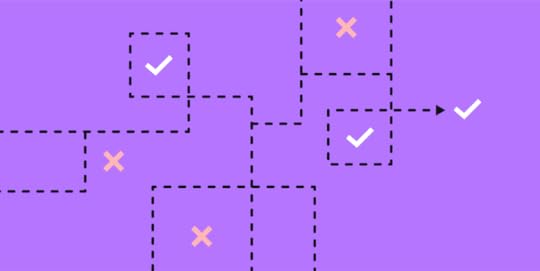
Bringing a new digital product into the market can, undoubtedly, be a rewarding feeling. Few things will motivate your team as well as seeing their hard work pay back in the form of satisfied returning customers and ROI. That being said, it’s not always sunshine and rainbows. The road towards a successful launch can be a tough and arduous one, filled with product development risks.
However, here’s the good news – if you’re aware and prepared for the potential digital product design challenges you can come across, you’ll make sure they don’t wreck havoc on your product development process.
We’ve asked 10 experts to share their experiences with challenges in product development and explain how they resolved them. Here’s what we’ve heard:
10 experts share their top product design challenges and how they tackled themLet’s begin with the (arguably) most common challenge – making sure your customers’ needs and pain points are addressed. We’ve asked Sep Niakan of Condoblackbook and Tommy Galagher of Top Mobile Banks about their take. Here’s what they shared with us:
1. Identifying your customer’s pain points
Sep Niakan, Managing Broker at Condoblackbook
Determining your clients’ pain problems should be at the forefront of your product development process from the start. You should be able to establish clear product goals that directly represent your clients’ needs based on their needs. While this may seem obvious, many businesses do the exact opposite: they do consumer research after a product has been launched. As you can think, this is a very backward, expensive, and time-consuming strategy. Product testing should begin early in the development process and continue throughout. Periodic and thorough testing will enable you to pinpoint exactly what your clients desire from your business and product.
Tommy Gallagher, Founder at Top Mobile Banks, agrees that customers should be at the center of product development:

The idea of developing a new product would fail miserably unless you have identified your clients’ pain points. Without consumer loyalty, there will be no money, which will eventually lead to the company’s downfall. Companies that operate without defined goals, fail to comprehend what they are prepared to pay, and fail to prioritize their demands are all factors that contribute to the company’s failure.
Even if the company has already launched the product and has opted to undertake research from the beginning, it would be quite costly. This can cause significant delays in the development of the product, as well as drain morale and potential market share through ineffective launch.
Ensure that the product is tested and experimented with throughout the development process, from conception to production. Many businesses start by designing a product and then looking for ways to sell it. Customers are at the center of a product’s ultimate success or failure. What they’re willing to pay and how it’ll meet their needs. Rather than waiting for the product to be fully launched, research, experimenting, and testing should be carried out throughout the development process.
4. Striking the balance between immediate requirements and long-term objectives
Robert Johansson, CEO & Tech Expert at imgkits
One of the product development risks that I have come across is not finding balance between immediate requirements and long-term objectives. It’s difficult to know how much money to put toward short-term demands versus long-term aspirations when it comes to product development. While the upfront expenditures of prototyping, research, and other services can be scary, it’s important to consider the big picture. Cutting corners during product development will end up hurting your business more in the long term.
3. Creative block
Garth McAlpin, an Architecture, Designer & Director & National Fulfilment Manager at Classic Architectural Group
One of the biggest challenges in product development for the team is facing creative blocks. Coming up with new and innovative ideas is a difficult task and even the most creative of people can feel a roadblock sometimes. This can happen due to a lack of insight on customer needs, organizational red tape, or desynchronization between the product development team and marketing. I too faced this challenge with my team last year, and it was one of the most difficult phases of my career.
To overcome our creative block and restart idea generation, I set up ‘idea baskets’ throughout the organization. Each employee was encouraged to give their take on current products and what features or services they would want to see in a new product. The response was slow at first as everybody felt awkward or hesitant. But then we turned it into an inter-department competition. The winning department would be given a bonus for their team dinner allowance. We collected numerous ideas in a matter of days.
The ideas were used as an inspiration for my product development team. Reading the opinions of their coworkers jogged their creativity and they were able to modify some of the ideas to come up with a viable new product. The employees whose ideas were used were also given credit for their effort.
4. Ideas’ generation
Robert Johnson, founder at Sawinery
Everything starts with an idea, however, creating an idea is not that simple. There are tons of factors that should be considered which makes it a very challenging task. To overcome such obstacles, every team should conduct brainstorming sessions wherein they can gather ideas from different perspectives. By doing so, the team can just easily evaluate each idea, or they can even connect one idea to another idea to come up with something that has high potential.
5. Creating the right product architecture
Darshan Somashekar, Founder & CEO at Spider Solitaire Challenge.
From the early stages of concept generation to design and implementation, a wide range of products and software development organizations have seen numerous setbacks when it comes to managing product competitive strategy and cost needs. It is commonly found that a few selling features are buried beneath complex design specifications and functional requirements, making it unable to address expected competition strengths. Similarly, once the solution is operational, it applies to the important requirements for time utilization and operational costs. Even if you strive for a particular level of competition in the eyes of your customers, you may not be able to earn income.
Just like building a new house, fine-tuning a product architecture after it has been developed and launched is difficult. Make sure to figure out whether you need to start with an existing product or start from the beginning. If you start from the beginning, the process is not impossible, but it will be time-consuming and expensive.
6. Assembling the right team
Mike Dragan, COO at Oveit
The development of a product is a collaborative endeavor. That is why putting together the best product development team is so important. While this group can be formed internally, some businesses find that working with an outside team of experts is beneficial. Having well-defined marketing, sales, and product launch plans is critical for successful product development and project management, whether your organization chooses to go the internal or external path.
7. Creating the right product architecture
Jason McMahon here, Digital Strategist at Bambrick
The failure to launch great product ideas on the market is largely due to a failure to properly organize and define the product management process. No results can be generated from initial brainstorming without the presence of a product owner. Even if the product owner is available, the majority of actions will not occur until the procedures are sufficiently established in order to progress past the concept stage. The product owner should not only be technically adept, but also adhere to the product’s primary objectives, such as customer satisfaction, profitability, and launch time.
When it comes to releasing a new product, product management is vital. Make sure you and your team are on the same page and that your objectives are clear. You must create a strategy, set clear targets, and determine the minimum profit margin you would accept for a new product. To achieve a positive customer response, define the marketing plans, sales plan, launch strategy, and call to action.
8. Adapting the product vision
Michael Varga, senior designer at Creative Navy UX Agency
It’s increasingly difficult to adapt the product vision as the project advances. We sometimes discover aspects that challenge our established vision late in the game. A lot of people prefer to ignore this new insight and rationalize away the contradictions or justify proceeding as initially established by saying “we need to launch this”. Vulnerability is at the core of these reactions. People are scared of failing (as product managers), of being wrong, of coming off as naive or short-sighted, etc. This fear is rooted in the false impression that our value lies in what we know and what we control. Great project managers know that if they feel like they know everything they actually don’t know anything just yet. The design process, while systematic, is plagued by ambiguity. People who look to uncover as much useful information as possible and successfully adapt to it build market-leading products. In the digital product niche, the winner takes it all. An amazing product can make up for the time spent on the previous 100 mediocre versions.
9. Working with remote teams asynchronously
Carey Fan, CEO at ChessKid
We are a pseudo startup faced with the challenge of having to work with a fully remote design team asynchronously, across multiple time zones. We’re small, so we have to scrap. That means our team wears multiple hats. For example, Guerson, our lead iOS developer, sometimes wears a product designer hat. He has good design instincts. By giving him some product ownership, we have more frequent releases. With Guerson at the helm of many key product design improvements, our ChessKid app went from a lackluster rating with fewer than 500 reviews to a 4.7 review with 17,000 reviews – despite the fact, Guerson was not hired to be our actual product design person!
You also have to build a culture of openness: win-win-win. Product improvements and even major feature ideas can spawn from any level from inside our organization. By having a culture where we encourage product input from anyone, employees become more invested in the product. That love and passion don’t go unnoticed by our users. Every day, we get testimonials from kids who say things like “it’s the best online chess experience I’ve ever had.” In the end, it’s a win for scalability, staff, and customers. Checkmate!
10. Effective workflow management
Nathan Gill, Chief Product Officer at Epos Now
One of the most common issues and challenges in product development is leaders not being able to adequately manage workflow. If a team isn’t effectively working together, then the speed and quality of the final product will be hindered. A product manager needs to understand the importance of getting everyone on their team on the same page. They need to openly communicate with every member of the team, at the same time and resolve any conflicts quickly.
A great tool that we use at Epos Now, to effectively manage workload, is Trello. This allows product managers to organize the operations surrounding the product. Teams can work from a centralized dashboard, where they have full visibility of their tasks and deadlines. This holds individuals to account and allows everyone to instantly communicate with each other.
Tackling product design challenges – TPX DesignOps 2.0 at PayPalAs the challenges mentioned above are most common for small-to-medium businesses, you might be wondering – how do enterprises tackle remote cooperation and workflow at scale?
A great example is PayPal’s so-called DesignOps 2.0 approach. You can learn about their unique methodology by watching our dedicated UXPin Merge – PayPal webinar:
Among others, you’ll learn how PayPal:
Challenges the Traditional Product Design & Development ModelPrioritizes Velocity, Quality, and CommunityUses UXPin Merge to create clear guidelines and improve cooperation between designers & developersand more.SummaryAs you’ve seen in this piece, there are several product design challenges your team can come across while developing a digital product. Our advice? Firstly, as the classic saying goes – learn from the mistakes of others! Secondly, make sure to use the right tools to facilitate cooperation between designers and developers. Here’s where a solution like UXPin Merge comes into play. As your designers use your existing code components, they can collaborate seamlessly with developers throughout the product development process.
Discover MergeLastly, we recommend saving this article for future reference or sharing it with your designers. We’re certain that the advice you’ll find here will be of great assistance in your product development endeavors.
Good luck!
The post 10 Experts Discuss Top Challenges in Product Development & How to Overcome Them appeared first on Studio by UXPin.
September 27, 2021
How to Create the Right Strategy for Product Development to Improve Digital Product Design?
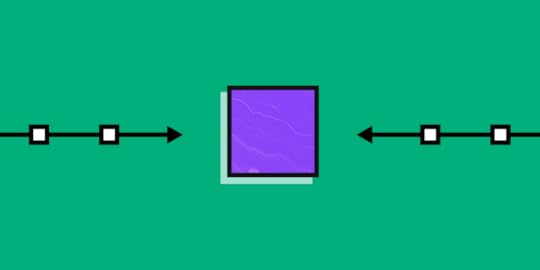
In today’s competitive digital landscape, success is a stream of fresh ideas. Innovative thinking. Audience-led and data-driven product design that meets the needs of your business and your customer – whether they knew they wanted it or not.
But for every iPod, there’s a Zune. For every static, stifled Myspace or Friends Reunited, there’s a Facebook; creative, agile, and willing to adapt and improve to meet users’ constantly shifting digital demands.
Whether you’re entering the marketplace with a creative new take or improving on an existing product, you can’t just jump in head-first and hope for the best. Success, however you define it, depends on a clear product design strategy.
In this article, we’re going to discuss what a digital product design strategy is and what it takes to create a successful one.
What is a strategy for product development?Product development strategy is the plan implemented by companies on their way towards successfully launching a new or modified product. Creating a successful digital product comes down to a number of methods and carefully planned steps. Just think of it – you wouldn’t build a house on a plot of land without a blueprint and the right foundations, and that’s what a strategy offers for businesses: stable foundations.
Each stage of digital product design – from initial idea to final roll-out – should follow a roadmap with clear steps, objectives, and vision to keep the project focused and on track.
A successful product design strategy will show an understanding of:
Your customersYour business and teamsYour industry and competitorsThe current marketplaceThe risksThe opportunities.With the above in mind, let’s answer another question:
Why do you need a product development strategy?There are several actions that a product development strategy empowers you to do. Here are some of them:
Develop a vision
You have a vision. A new product, a new way of doing things. The exact details might be vague and hazy, but the idea itself is crystal clear – and it takes skilled teams to deliver it.
Your product design strategy is a communication tool. A means to share your vision, and with the help of others, research it, refine it, and make it ready for market’s launch.
Here’s where the ‘design thinking’ mindset comes into play. Defined by David Kelley and Tim Brown, it’s ‘a human-centered approach to innovation that draws from the designer’s toolkit to integrate the needs of people, the possibilities of technology, and the requirements for business success.’ It encourages collaboration and the exchange of ideas between business, design, and development teams, which are all closely aligned and play towards a common objective.
A common vision will also lower the risk of poor communication among team members, which is estimated to cost businesses $524,569 every year.
Identify and prepare for riskIf the last two years have shown us anything, it’s that we never know what life’s going to throw at us. But at least with a strategy for product development, you have the opportunity to:
Examine potential threats – know what to expectMinimise risks – know how to prevent itPrepare for recovery – know what to do if the worst happens.Assess major threats:
Can your IT systems cope with a new service? What data security compliance standards will your new app have to meet?Also, take into account smaller threats and those that, left unchecked, might derail the whole project, including processes or team member availability.
Measure successAt the end of it all (and, even, at every step of the way) you and your teams should have a clear idea of what worked and what didn’t. During the initial stages, loosely define what success looks like. Depending on the project, prepare to adapt if the goal is unrealistic or simply impossible.
Once the project develops beyond the discovery stage, begin setting Key Performance Indicators (KPIs) and milestones to measure the success of your product. All teams should understand the goals that are being set, to facilitate collaboration and propel the product to a successful launch.
Tips to building a product development strategyYour response to building a product design strategy hinges on whether you’re building a product from scratch or adding new features to your current one. With your approach in mind…
1. Gain a deep understanding of the problem you’re solving

During the early stages, you should be focusing on why you want to introduce or improve a product, and who it’s really for. A question Google Glass still appears to be struggling with. Is there a business need for your idea? Is there already a solution out there that achieves the same results?
Best-selling author and marketer Neil Patel highlights five tools and techniques to understand your customers, which include creating buyer personas and engaging in customer journey mapping.
Remember to dig into your existing data, drawn from website traffic, social media channels, and the likes. Build a clear picture of who your customers are and what they want. This should be data-driven and data-rich – avoid using broad, fictional personas. Ask yourself: why would a target user buy your solution instead of someone else’s?
That being said, alongside customer analysis, research competitors. Find their strengths and weaknesses to identify your own product’s unique value proposition.
When adding new features to your product, customer research lets you reassess your market positioning and current assumptions about what your product offers. Meanwhile, competitor analysis lets you see how developing new features and integrations can add value and make your product unique amongst rivals.
2. Define your productYou’ve identified the problem. Now, you need a solution. A real, precise, exact roadmap for solving the problem is required, detailing what features you’re going to include and how you’re going to achieve that.
You should address:
Functionality – your solution should do what it sets out to do, and genuinely solve the problem. Imagine if Facebook didn’t let you connect with friends, or Google scuppered its own search engine. Usability – your product should be intuitive and easy to use. That’s what made both of the above companies so successful. Even if these sites aren’t your direct competitors, they’ve set user expectations on function and navigation. Desirability – your idea should appeal to users, but it should also be desirable from a business standpoint. Consider performance, UI, costs, and resources.If you’re modifying an existing product, look at each of these areas to discover which ones are under-performing.
It’s not easy to get your product right the first time. For this reason, it’s worth investing time in minimum viable product (MVP) research. You will be able to see how your target audience responds to new ideas and modify them based on their feedback.
3. Visualize the productThis is where the fun begins. You and your team should now have a pretty good idea of what to create, so you can start the design process. There are four stages:
Ideate

During ideation, your team will be running on concept drawings, prototypes, and concept revisions to test a product’s strengths and weaknesses. This stage is defined by innovation and creation. Encourage a stream of ideas (there are no bad ones, remember) and nurture the best, i.e., the ones that fulfill a need.
ProveShow there’s a business case for your solution. Gather user feedback across all channels and mediums – from surveys and social media conversations to face-to-face interviews and your own experience and observations. The trick is to find the right audience. Especially, if you’re modifying a product and have built up a user-base that may not be the target for any new features. Look to any past feedback for any valuable insights or recurring issues you may have already collected.
RefineArmed with actionable insights from your target audience, you can begin to tweak your product based on the responses. For example, simplifying the user interface, or adding quick actions and links to popular spaces within an app. Again, beware of project creep as you balance the desires of the user with business needs. Teamwork is important here, as changes and refinements must be communicated. To modify the product, it’s best to use a tool like UXPin Merge – and if you haven’t used a DesignOps tool like this before, you’ll be introducing a better way to collaborate on digital product designs with developers.
Build

It’s time to bring your digital product design together. Whether it’s a fresh product or a cool, new update, achieving the best results depends on having the right teams, following the right strategy and using the right tools. In addition to using components you’ve already developed, you can take advantage of open-source UI libraries like Material Design and Fluent UI to build the best product without breaking the bank.
4. Measure your product’s successThe no. 1 question any digital product development team will ask themselves is: was it worth it? The only way to really know is by measuring performance against KPIs. As briefly mentioned above, KPIs help you track outcomes at every stage, monitoring the performance of staff, but it’s especially critical once your product is rolled out.
Now you can begin to learn why (or why not) the project was a success. You can also find out where you can improve in a future launch or update. At a minimum, KPIs should be realistic and measurable. Avoid so-called ‘vanity’ metrics that make you and your team look great, but tell you little about how a product has been received.
When modifying your product, analyze previous KPIs and compare them over time for significant or avoidable changes. So, for instance, if you noticed your NPS is lower, or your app retention rate has decreased, it’s worth further investigating it to get feedback and take action.
SummaryA full product design strategy gives you an advantage in the competitive digital space. Not only should it result in an unmissable new product or a wildly creative update, but it’ll also help you explore your market and those operating within it.
That being said, it’s worth recognizing that digital product design will only be as good as the tactics and tools you use. To create truly cross-functional teams, it’s essential to create the right communication guidelines and use powerful collaborative tools like UXPin Merge. It will help you achieve full consistency from design to development of the final product.
Interested in learning more?
Discover MergeThe post How to Create the Right Strategy for Product Development to Improve Digital Product Design? appeared first on Studio by UXPin.
September 24, 2021
5 Tips to Create prototypes for Mobile Apps
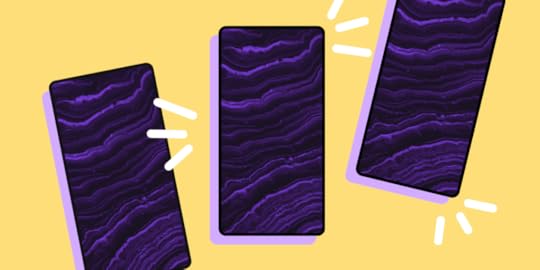
With the massive range of smartphones and screen sizes, creating and testing prototypes for mobile apps is a critical part of the design process. UX teams must thoroughly test designs and resolve usability issues before handing the final drafts over to engineering.
Developing an app is a time-consuming and expensive process. It’s much quicker and easier to redesign a prototype than it is to reengineer the final product.
UXPin enables UX designers to create fully functioning prototypes for mobile apps that look and perform like the final product. Sign up for a 14-day free trial and experience superior mobile app prototyping with UXPin.
What is a Mobile App Prototype?A mobile app prototype demonstrates the functionality and aesthetics of a final product. With so many mobile devices on the market, a product must function effectively on every screen, including smartphones, tablets, and possibly a smartwatch.
These mobile app prototypes enable UX teams to see how design concepts and user flows look and operate on different screen sizes and how users interact with each one.
UX teams create mobile app prototypes throughout the design process—from lo-fi paper models to fully-functioning high-fidelity prototypes.
What is the Purpose of a Mobile App Prototype?UX teams use mobile app prototypes for three primary purposes:
Testing & validating ideasUsability studiesPresenting to stakeholders and developers for handoffsTesting & Validating IdeasDuring the early stages of the design process, UX teams experiment with lots of design ideas. It’s an exciting part of the project where UX designers think out of the box, often imagining wild and seemingly impossible designs.
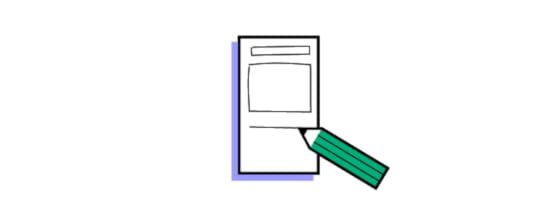
UX teams create low-fidelity mobile app prototypes to test and validate these ideas, often laying hand-draw paper screens in sequence to visualize user flows.
Usability StudiesUsability studies allow UX teams to test user flows, screen layouts, interactions, accessibility issues, and the overall user experience. This user-centered approach enables designers to create a product that meets the user’s needs.
Presenting to StakeholdersMobile app prototypes also make excellent tools for presenting concepts and design ideas to stakeholders. These prototypes can also help startups acquire early-stage funding.
Engineers reference mobile app prototypes from the design handoff to develop the final product.
Using Spec Mode in UXPin lets developers view the project’s color palette, screen size, typography, and other essential data. In addition, developers can inspect each element for its dimensions, CSS, and content.
Types of Mobile App PrototypesThere are two types of mobile app prototypes:
Low-fidelity prototypesHigh-fidelity prototypesLow-Fidelity PrototypesUX teams use low-fidelity mobile app prototypes during the early stages of design. Built using wireframes, the primary objective of these low-fidelity prototypes is to visualize screen layouts, organize information architecture, and simulate user flows.
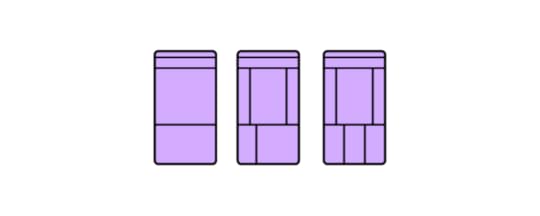
These lo-fi prototypes come in two forms: low-fidelity paper prototypes and digital low-fidelity prototypes. Both use simple wireframes (usually black and white) with placeholder content.
Paper prototyping is a fast, collaborative process where UX teams turn ideas into working models using just a pen and paper. In some cases, designers will build cardboard mobile devices to simulate scrolling, swiping, and other navigation interactions.
UX designers create digital low-fidelity prototypes using design tools like UXPin. These hi-fi prototypes feature clickable elements so designers can test user flows.
High-Fidelity PrototypesHigh-fidelity mobile app prototypes are functioning models of the final product, complete with color, content, animations, and interactions.
Hi-fi prototypes help UX teams test how users interact with the mobile application. High-fidelity mobile app prototyping plays a critical role in solving usability issues before designers hand off to engineers.
Design teams also use high-fidelity mobile prototypes for presenting designs to stakeholders. With a fully functioning prototype, stakeholders can get a “final-product experience” and provide meaningful feedback.
5 Tips for Mobile App PrototypingMobile app prototyping is an exciting part of the design process. Designers get to see their ideas come to life while gathering valuable insights from usability testing.
Here are our 5 tips to improve your mobile app prototyping.
Tip 1 – Test Early, Test OftenTesting is a primary objective for teams creating mobile app prototypes. Without testing, UX teams can’t validate design ideas or expose usability issues.
UX designers should use paper prototypes to test as many ideas as possible during the design concept stage. Teams must take advantage of the fact that testing with pen and paper is inexpensive. Trying even the craziest ideas ignites creative thinking, which could lead to innovative breakthroughs.
High-fidelity prototyping allows UX teams to optimize mobile applications to meet the user’s needs. Usability studies incur many costs (participants, tools, facilities, etc.), so researchers must set clear goals and objectives while ensuring they test the right participants to achieve meaningful feedback.
Tip 2 – Test Mobile App Prototypes on Multiple DevicesUX teams often make the costly mistake of not testing mobile app prototypes on enough devices or screen sizes. This mistake could result in poor product performance or some features not functioning.
If you’re operating in a competitive market, users might abandon your poor-performing product for the competition!
UXPin allows UX teams to test mobile app prototypes on iOS or Android using our Mirror app. Any changes you make will instantly update the Mirror app—perfect for making changes on the fly during usability studies or during feedback sessions with stakeholders.
Experience mobile app prototyping in UXPin with a 14-day free trial. You can start from scratch or import existing Sketch designs to test your prototypes on multiple devices.
Tip 3 – Use UXPin to Create Better Mobile App PrototypesThe ultimate goal for prototyping is to create a mobile app prototype that looks and functions as close to the final product as possible. Unfortunately, most vector-based design tools lack the capability to achieve this!
UXPin is the most advanced prototyping design tool on the market. UXPin is a code-based tool that lets UX teams design with fully interactive components that devs built through UXPin Merge.
Using fully functioning components, UX teams can create mobile app prototypes that perform like a coded application, thanks to Git and Storybook integrations
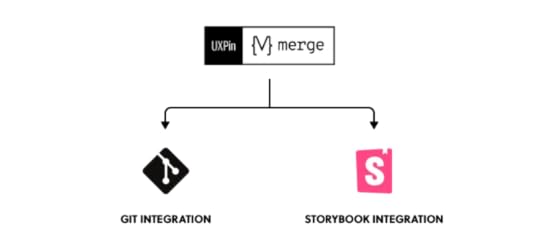
Instead of imagining what a feature might do, users and stakeholders can interact with the mobile application through UXPin Mirror as if it was the final product.
Mobile app prototyping in UXPin enables UX teams to get more meaningful feedback and detect usability issues other design tools cannot.
Using React components from a Git repo gives engineers less code to write, accelerating the development process for faster product and feature releases!
Tip 4 – Don’t Get Side-Tracked!Designing high-fidelity mobile prototypes is a fun process. Designers get to create interactions, transitions, and animations to enhance the user experience.
However, without clear objectives, designers can get side-tracked designing irrelevant features and interactions.
DesignOps sets project goals and KPIs to ensure UX designers focus on designing prototypes that meet the requirements for usability testing— rather than adding redundant “nice-to-have” features that don’t serve the end-user.
Tip 5 – Involve Other DepartmentsUX teams shouldn’t only reserve testing for end-user participants. Involving team members from other departments is an excellent way to build excitement about a new product or feature within an organization.

Team members from outside of the UX department might provide valuable feedback that designers hadn’t considered. For example, the marketing department might point out that email forms need a first name and email field because personalizing correspondence increases conversions.
Internal prototype testing could provide valuable feedback to improve the product for the company that UX teams might not get from participants.
Final Thoughts on Creating Prototypes for Mobile AppsBuilding native mobile applications is a challenging task! Designers and engineers have to consider how products will perform across multiple devices and screen sizes.
Mobile app prototyping enables UX teams to test designs across these devices with diverse participants to catch any usability issues before committing to code.
Creating Mobile App Prototypes with UXPinCreate advanced mobile app prototypes with UXPin that look and function like the final product—something other design tools cannot do!
Here are three powerful UXPin features that UX designers can use to build better prototypes:
UXPin’s ready-to-use components inspire UX teams with screen layouts, interactions, transitions, animations, and more. These prototypes also enable designers to experience what’s possible when designing in UXPin.UXPin comes with several design systems pre-installed . Designers can drag and drop elements from popular design systems like iOS, Material Design, and Bootstrap to build mobile app prototypes fast! You can also create your own design system featuring your brand’s colors, typography, assets, and components.Using Variables , designers can store user inputs and take actions based on the provided data inside the prototype—tailoring the user experience as you would in a final product. UXPin Merge lets you design using code components from a Git repo or Storybook to create fully functioning high-fidelity mobile app prototypes. Prototyping with Merge provides participants with an accurate representation of the final product allowing researchers to get valuable feedback they can’t get from other design tools.Try UXPin for FreeReady to start designing in the UXPin prototyping tool? Get started with a 14-day free trial to experience UXPin’s powerful mobile app prototyping features!
The post 5 Tips to Create prototypes for Mobile Apps appeared first on Studio by UXPin.
September 22, 2021
Product Development Process: A Step-By-Step Approach
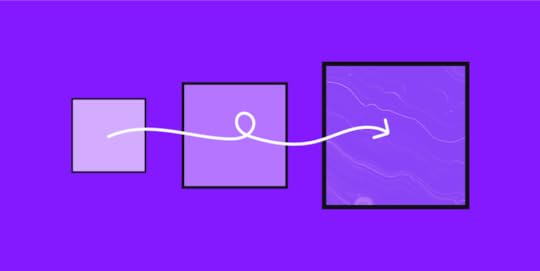
Bringing a new product to market is hard. The scary statistic is that 95% of new products fail despite all the time, effort, and resources invested to bring these ideas to life. But that shouldn’t discourage you from trying though, because when you get it right, you can transform your industry and build a business that you can be proud of.
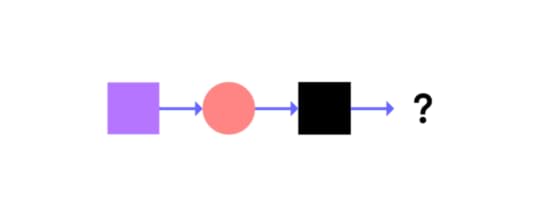
To give yourself the best possible chance of success, one of the things you should focus on is maximizing the product development roadmap so that you launch something that can truly move the needle. In this article, we’re going to run through each phase of product development so that you have everything you need to build the next unicorn product.
Let’s dive in.
The Life Cycle of Product Development (What Is It?)Before we dive in and discuss the particular phases in product development, let’s take a bird’s eye view of the journey a product goes through. We call this the product life cycle. Regardless of what product you’re building, these stages are quite a common progression that we can use to understand each phase of creating/building a new product.
What are the stages of the Product Life Cycle?Development. This is the very first phase where you’re still figuring out what the product is going to be. You iterate and test your assumptions as you build until you think that you’ve got something that is ready to take to market.
Introduction. In this phase, you launch the product to the market and try to build enough awareness around it to create demand. This is where promotion and marketing play the biggest role to get it in front of potential/future customers.
Growth. If you get to this stage, it means that you’ve found product-market fit and you have a growing customer base. Now, you focus on scaling your operations, sustaining your marketing, and leveraging economies of scale.
Maturity. A mature product is at the peak of its powers. It has fully saturated the market and has fulfilled its potential. This is when you just strive to maintain the results.
Decline. Everything must come to an end. As Neil Patel aptly notices, “even Coca-Cola will end one day. Maybe not the company, but its main product. This might take 100, 200, or even 1000 years. It’s impossible to predict. But every product reaches the end and concludes its life cycle”.
Your product will also eventually reach this last step in its life cycle. It might become irrelevant due to market changes, new innovations, or a million other things. You have two options:
you can either retire it and move onto the next one,or pivot and come up with product iterations to retain market relevancy and postpone the decline phase.Now that we have a sense of the long-term journey, let’s zoom in on the very first step – the development of your product.
What Stages Does the Product Development Process Involve?While there is no single way to work through the product development process, there is a range of different approaches that can be used. It all depends on which one works for your specific business. Here are a few of the popular ones:
The Stage-Gate Model splits the development process into different stages, with a ‘management gate’ acting as a key decision-making process at regular points throughout.
The IDEO process focuses on engaging with the end-user and putting yourself in their shoes as you develop the product.
The Booz, Allen, and Hamilton (BAH) model is a carefully structured process based on management best practice that has been refined over the years.
With some of that background, let’s now look at the most common stages in product development.
Ideation
It all starts with idea generation. This is where you undertake a systematic search for new ideas and insights that can be transformed into products. In most cases, you need to wade through hundreds of ideas to find the one or two golden ones that actually have potential. According to the McKinsey Data Institute, only 4 in every 7 ideas make it to the development stage, and of those only one is actually successful. This is an art and a science, but here are some of the better methods to help you work through these ideas:
Problem Analysis is all about empathizing with the customer. Can you dig into the problem that they’re facing and let that drive you towards new ideas? What is the pain point? What does the customer need? Then look for ways to solve that.Benefit Structure Analysis refers to when you compare ideas to each other based on the benefits they provide to the end customer. The key is to prioritize which benefits are of most importance and focus on the product ideas that deliver those most effectively.A SWOT Analysis is a systematic process where you run through the strengths, weaknesses, opportunities, and threats of a potential new idea. Thinking in each of these different dimensions helps to give you a great sense of how strong the idea actually is.Research and Idea ScreeningNow that you’ve got plenty of good ideas, it’s time to select the most viable option. The best way to do this is to combine internal and external insights to verify whether your idea has legs:
Conduct surveys with your target market to assess the demand for such a solution. Create a landing page for your product to see if it generates any interest.Run a PPC campaign to get real data on how your product messaging resonates and to check if there is a real need for what you’re building.
Create a landing page for your product to see if it generates any interest.Run a PPC campaign to get real data on how your product messaging resonates and to check if there is a real need for what you’re building.Those are just a few examples of what you can do to get data on whether the product is likely to be successful. This proactive work is crucial so that you don’t waste your time on an idea that is not actually going to make a dent in the marketplace.
PrototypingNow we get to a very crucial step – testing your idea in a visual format for the first time. Typically, the designers will step in here to create a bare-bones version of your product so that you can convey the product idea in a more tangible way for potential users.
There are two main types of prototypes:

Low-Fidelity Prototypes have simplified visual content, a highly simplified navigation hierarchy, and, usually, a limited interactivity. They can be built really quickly and give a potential user a sense of what the final product is going to look like.
High-Fidelity Prototypes are much more interactive and clickable With realistic visuals, and a fully functional navigation hierarchy. They take more resources and time to create but they are also much closer to what the final product might look and feel like. We discuss these more fully in the next section.
When you use prototyping correctly, you can:
See how people respond to the product idea in its rough visual shape,Collect feedback and implement changes to user flows and functionalities before you create high-fidelity designs (and start the actual coding), andVerify your key concepts, modifying your go-to-market strategy if necessary.The ultimate goal of all of this is to clear your prototypes for high-fidelity designs that come next. And one of the most important parts of this is choosing the right prototyping software. Whatever you choose needs to be able to function right from the early wireframing stage all the way through to launch. We genuinely believe that UXPin’s Merge is the best way to go about this. It allows your designers to design with fully interactive components that are also production-ready, i.e., they are already coded and built by developers. This makes the whole product development process faster and easier. It’s much better than designing from scratch and will enable you to spend more time actually engaging with customers.
Detailed DesignThis step of the process is where you transform your low-fidelity prototypes into high-fidelity versions – adding in colors, interactions, images, and the like. This is where you seek to differentiate your product visually from any competitors.
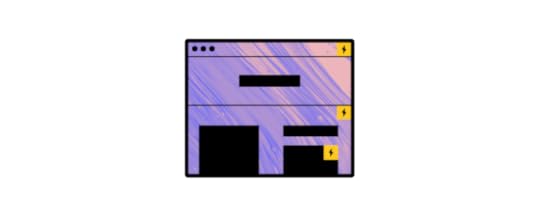
Once you have your high-fidelity prototypes, you need to test them with potential users and collect feedback in an iterative manner. With each new iteration, you’re learning more about how your product is received in the marketplace and you can fine-tune how it’s built. Again, you can use a tool like Merge to speed up the design process. Your designers can use the code components your software developers have already coded and apply them to maintain consistency as you grow your product.
Faster iterations mean a much more effective product at the end of the day.
Validation and TestingThe ultimate step before the product market launch is to go through the final validation processes. You should be looking to do a wide range of different usability testing to ensure that your product is working as expected and that it’s ready for launch. This can be remote or in-person and it typically takes the form of user session recordings, live walkthroughs, and more.
In each case, try to give the user as little information as possible and see if they can operate your product intuitively. If they can, then you’re on the right track.
DevelopmentNow you hand off all the designs and specifications to the developers to start building the product. In the industry, this is typically called the developer handoff. The developers take all the insights and knowledge collected during the development process and bring it to life.
The success of this phase depends on the quality of your work before this. But if you’ve worked through things systematically the developers should know exactly what is required and they can get to manifesting your vision.
What’s more, if your designers use UXPin Merge, your developers will be able to simply copy the code from the prototype’s component and paste it directly into their code editors.
LaunchFinally, the day has arrived! The final stage is about bringing the product to market. Here you’ll come up with a comprehensive sales and marketing plan to announce your product and get it in front of as many potential customers as you can.
This is not to say that your work is finished though. You should still be monitoring progress, verifying the product’s usage, and refining it until you have everything dialed in to grow a loyal user base. Then you’re off to the races.
Product Development Process Redefined: A New, Faster ApproachNow that we’ve run through the entire product development roadmap, hopefully, you have a sense of what it takes to bring a product to market successfully. One of the key themes that you might have picked up is how easy it is for rifts to develop between designers and developers if you don’t have the right structures and processes in place. In addition, it can take a lot of time if you aren’t moving through the phases of product development efficiently.
Tools like UXPin Merge are invaluable for speeding up the process and helping designers and developers collaborate efficiently. In some cases, you might even be able to skip wireframing altogether and start at the detailed design phase because you can import and use interactive components that are 100% ready. All it takes is some small adjustments to the properties and you have a fully functional prototype without having to start everything from scratch. Why not give it a go?
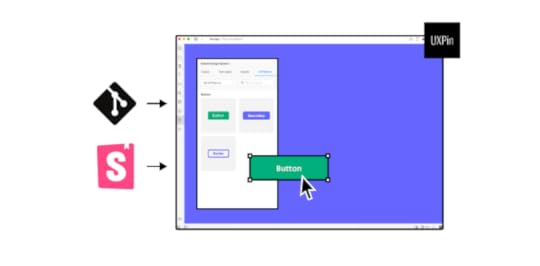
With the right technology behind you and a systematic step-by-step approach, your product is destined for success. We can’t wait to see what you build!
The post Product Development Process: A Step-By-Step Approach appeared first on Studio by UXPin.
UXpin's Blog
- UXpin's profile
- 68 followers



